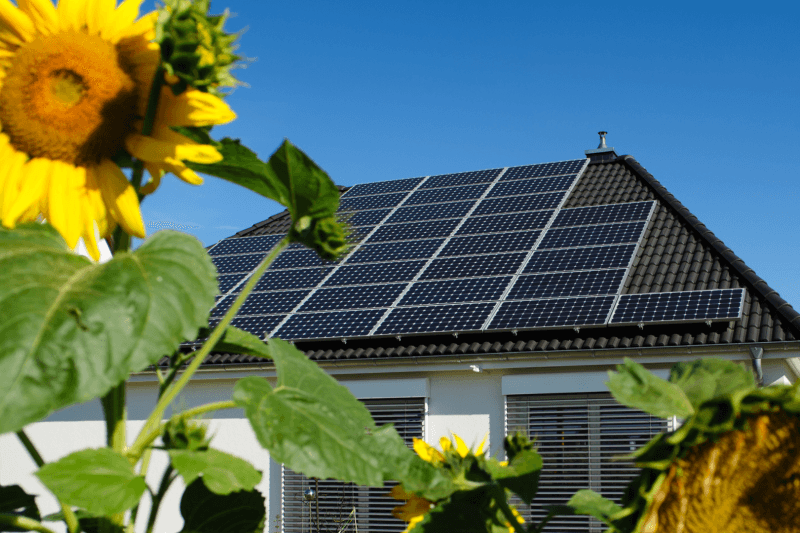If you’re reading this, chances are that you are already familiar with solar power generated by Photovoltaic (PV) panels – the ones that you might see on your neighbours’ rooftops.
But concentrated solar power (CSP) is a slightly different way to generate solar power, harnessing the sun’s energy through the use of mirrors.
The mirrors reflect, concentrate and focus natural sunlight to a specific point, before converting the light into heat. The heat creates steam, which is channelled into driving a turbine engine, which in turn generates electricity.
PV solar panels depend on the sun’s light to make electricity, whereas concentrated solar power depends on the sun’s energy and efficient storage of that energy using Thermal Energy Storage technologies (TES).
That is, while PV systems can’t store thermal energy because they need direct sunlight to do so, whereas concentrated solar power systems only need heat. That difference makes CSP systems better for energy storage and efficiency.
What’s more, CSP systems can be combined with other power sources, such as coal, natural gas and biofuel, to create hybrid power plants.
So how exactly do concentrated solar power systems work?
There are four types of CSP technologies:
In a parabolic trough CSP system, the energy of the sun is concentrated into curved, trough-shaped mirrors set in parallel rows. The mirrors track the sun’s course from east to west during the day, focusing the sun’s energy onto receiver pipes. The pipes normally contains thermal oil, which heats up from around 293ºC to 393ºC and then is used by the thermal power block to generate electricity in a conventional steam generator.
Power tower systems, also known as central receiver systems, use sun-tracking mirrors called heliostats to concentrate sunlight onto a receiver set on top of a tower.
The receiver heats up transfer fluid to temperatures of around 600ºC, which is then used to generate steam. The steam produces electricity in a central turbine-generator capable of producing power 24 hours a day.
Linear Fresnel systems consist of collectors lined up in parallel rows, in a similar way to parabolic trough systems.
The rows are aligned north to south to maximise annual and summer energy collection, with the reflectors laid flat on the ground, reflecting the sunlight to a pipe above them. Like the previous two systems mentioned, this concentrated solar power system can incorporate storage in a power block, or generate steam.
These systems reflect solar radiation onto a receiver mounted on a structure designed to track the sun’s course. The dish can reach high temperatures as it collects sunlight, which means it is perfect for use in solar reactors.
The advantages of concentrated solar power
Now that we’ve looked at the different concentrated solar power systems, let’s look at why this form of energy generation is useful.
-
- CSP is renewable, as it relies on the sun. Unlike other energy sources, its supply will never be exhausted.
- CSP is great for the environment and reduces carbon footprint, improves air quality, and can slow down climate change.
- CSP can work alongside existing steam-based power plants and even fossil fuels can be integrated into CSP systems. What’s more, CSP plants are lower maintenance and running costs are lower than nuclear and hydrocarbon-based plants. This also means that CSP could be the future of electricity demand.
- CSP could be a transportable form of energy.
The disadvantages of concentrated solar power
As with everything in life, there are some downsides to CSP.
- It depends on location and needs a large area of land to operate, which makes it uneconomical in populated areas.
- CSP uses a lot of water to drive steam turbines and to cool thermochemical reactors, which might be problematic for the surrounding landscape. CSP plants can attract animals with its light, which could be dangerous for some species.
- Competition from solar PV and fission-based nuclear power means that CSP isn’t being invested in as much as it could be.
Is concentrated solar power the future?
There are various countries and locations around the world where CSP is already being used. In fact, there are around 130 CSP projects globally, with a total installed capacity of 5,500 MW.
Most of the world’s CSP plants are in Spain, making up around 42% of all CSP installations in the world. The Planta Solar 10 (PS10) in Spain was the first commercial utility-scale solar power tower in the world. Spain is set to increase the amount of CSP plants it has as part of a ten-year energy plan.
Noor Energy 1, Dubai’s 700MW CSP project, which is currently under construction. Its design consists of parabolic troughs and solar towers, and is part of Dubai’s sustainable and environmentally friendly development.
The USA has also invested in CSP plants, 52 of them to be precise.
As we can see, some of the world’s leading countries are turning to CSP technology, which bodes well for its further development and future use.
Finally, there is research underway to investigate whether CSP could make fuel out of air and light. This could be a solution for cleaner air and removal of CO2 from the air and the lowering of global temperatures.
It looks as though concentrated solar power will play a large role in developing sustainable and environmentally-friendly energy solutions for future generations.
| Like the sound of all that? Curious to know more about solar power solutions and how you can do your bit for the planet? Read more here. |

